You probably already know that you need to regularly create content to succeed in inbound marketing. And if that’s the case, you likely already have a blog, some lead-gen offers, and some social media accounts put to good use. As useful as all those things are, it's easy to get into a content rut, and producing the same types of content over and over is not only boring for you, but it doesn’t exactly stimulate your prospects, either.
Well, we think it’s high time you shook up your content balance and experimented with some new types of content you’ve never tried before. Let’s be honest: your competitors probably haven't tried them, either, so you’ll really stand out. Read on for 14 types of under-used content we think more marketers should be implementing in their campaigns and on their websites.
14 Types of Content You Should Experiment With
 1) Animated GIFs
1) Animated GIFs
Animated GIFs have long been used on chat boards and forums online, but they weren't exactly mainstream on the internet. But recently, the blogging platform Tumblr has brought GIFs back into fashion with a passion, and we think these fun animations can add an interesting visual element to your marketing content. Try incorporating animated GIFs on your website and landing pages (as we've done with the GIF to the right to show off pages of one of our marketing analytics ebooks) to enhance your content and stimulate your visitors. They're easy to make, and fun to find as a visitor.
2) Comics/Cartoons
Comics and cartoons are another type of content that marketers can have fun creating -- and prospects can have fun seeing. Even better, though? They're excellent social media sharing fodder. Funny cartoons that are relatable to people in your industry are sure to garner you more social shares than the average text update -- and they'll stick around on the web longer, likely generating some valuable inbound links and traffic as a result. For instance, I recently stumbled upon one of HubSpot's older cartoons (originally published in 2009) that someone shared on Twitter recently, poking fun at the differences in social networks:
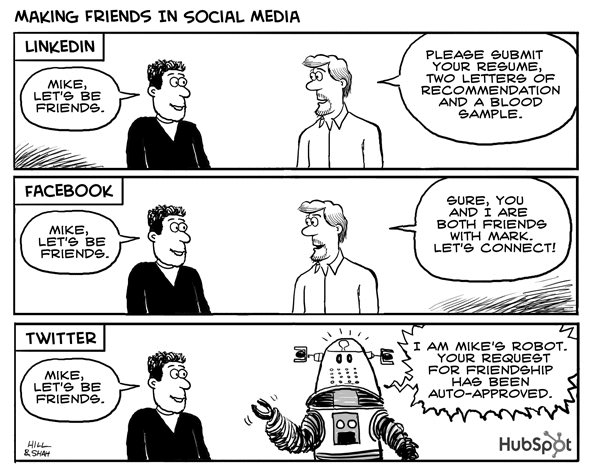
3) Concept/Content Visualizations
Not to be confused with infographics (which we'll get to soon!), concept visualizations are another great content type to add to your marketing tool belt. These visualizations more easily explain abstract or difficult-to-understand concepts that are hard to describe through text. The most effective ones are illustrated as one would pages in a children's book -- simply, colorfully, and clearly. Content visualizations can serve as great trump cards in the back pockets of content creators when it comes to getting prospects and leads to understand difficult concepts that your products and services help to solve. At HubSpot, for example, we frequently make use of concept visualizations to illustrate various inbound marketing-related concepts in blog posts, ebooks, webinars, social media, etc. Check out this one we created to visualize the concept of closed-loop marketing:
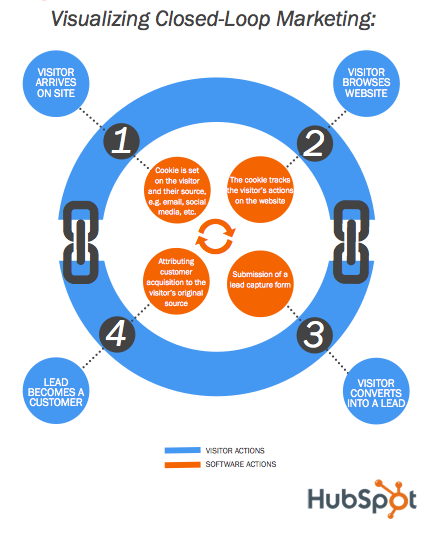 4) Controversial Content
4) Controversial Content
We all know that a bit of controversy can drive a ton of traffic, comments, and inbound links. Why? Because controversy is compelling. It stirs up emotion and inspires passion, and passion motivates action. When executed well, controversial content can increase engagement and brand awareness, as well as reinforce your brand's particular breed of thought leadership. Just be sure that if you're taking on a controversial topic in your industry, you're not just doing it for the sake of stirring up controversy. Make sure you have the opinions, and supporting arguments to back it up.
For instance, we're stirring the pot a little bit ourselves this Friday with a live debate between HubSpotters Kipp Bodnar and Laura Fitton. The topic? Whether or not Twitter is a dying social network. Tune in here this Friday, June 22 at noon to watch the debate unfold -- we'll be livestreaming! And join in on the debate using the hashtag #MKTGDebate. Just in case you might have an opinion on the matter.
5) Livestreaming Video
Speaking of livestreaming video, why not add that to your list as well? These serve a dual purpose: traffic and content. During the livestream of your video, traffic will be flooding into your site. You can insert calls-to-action or product/service information if you'd like, though don't turn your show into a live infomercial. Apply the same type of logic to your content here as you would to your blog posts -- is the content relevant to your industry? Does it display thought leadership, discuss an interesting or new data, or otherwise present a relevant and interesting take on a popular topic?
This sort of content is excellent for real-time social engagement. Create a hashtag to accompany your livestreamed content (just as we've done with our live debate tomorrow: #MKTGdebate), and spark discussion online before, during, and after it streams. Afterward, make sure you offer a recording of the livestream for on-demand viewing.
6) Embedded Tweets
We'll be discussing user-generated content in a minute, but embedded tweets deserve their own mention because they're painfully easy and chronically under-used. You'd publish testimonials if they were submitted in other forms, right? If you have users who are tweeting positively about your company, you should be showing it off on your website. It's easy to do, and it offers the extra bonus of promoting your social media presence right on your website site. What's more -- they're versatile. To find out how to embed tweets yourself and the various uses of embedded tweets, check out this simple guide. We've embedded a tweet below from our recently announced strategic partner @HootSuite to show you how it works.
Are you in for the world's largest webinar? Join HootSuite and @ HubSpot on July 12: ow.ly/bAHsU#ClosedLoopSocial
— HootSuite (@hootsuite) June 18, 2012
7) Event Information
It's not enough to simply announce your participation in events, and then allow the blog post you wrote about it to get lost in the oblivion of buried pages on your website. Instead, add a page on your website that clearly lays out all of the events your company will be attending in the foreseeable future. For each event listed, there should be a link to the event site, your company's location at the event -- if that's relevant, since not all events are trade shows -- and any available social media information for the event that you're using (you know the drill - hashtags, location-based check-ins, etc.).
8) Infographics
We've long sang the praises of using infographics to illustrate data-based or process-based information. They can be used for just about any subject that you've got numbers or info to back up, they're eye-catchingly colorful and jazz up any blog post or landing page, and like concept visualizations, they also lend themselves well to social sharing, especially on visual sites like Pinterest. And, don't tell anyone we told you this, but they make excellent linkbait! If you're thinking of creating one yourself, make sure you first understand the 10 traits of awesome infographics.
9) Memes
This one has to be the most fun suggestion we have to offer. Take some time to familiarize yourself with the popular memes currently circulating the internet (they do have proper form, you know!), and see how (and if) you can adapt them for your marketing purposes. Memes are catchy, fun, and memorable, and they can help you establish your brand's personality. Plus, they're another type of content that's excellent for sharing on sites like Facebook, Pinterest, Google+, and other social networks. And we all know how much this visual content thing is catching on. For example, below is a riff on the 'What People Think I Do/What I Really Do' meme that HubSpot used on its Facebook page, which accumulated 460 likes, 53 comments, 337 shares!
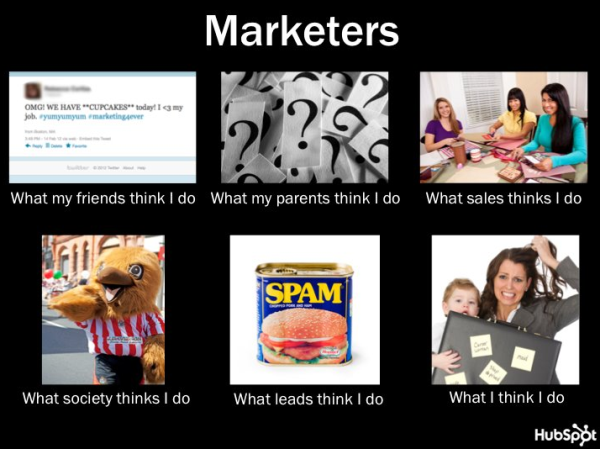
10) Music Videos
If your company decides to produce a music video to add to your content mix, prepare to have a lot of fun. Sure, they're definitely more of a time investment, involving everything from writing original lyrics to a popular song (or writing your own from scratch) to filming and editing your masterpiece, but if you're able to dedicate the time, you'll reap some great rewards. Videos are, of course, the medium that the term "going viral" originated from, and thus are excellent for sharing in social media and embedding onto a web page or in a blog post. Plus, they're excellent for branding and brand awareness. Check out one of the many music videos we've produced here at HubSpot, featuring the SEO Rapper himself!
11) Original Data
Original data is great fodder for some awesome content. Think of best practices in your industry that you need data to prove, and conduct some research. Maybe it's a survey of your customer base, or maybe you can partner with a research firm to help you collect the data you need. Then pull together a research report on the findings, and release it as a new offer. Publishing original data can help establish you as a thought leader and a resource that stays ahead of the trends in your industry. This idea also plays nicely with infographic or visualization suggestion we shared earlier -- in fact, we think they'll make a truly beautiful couple if you decide to match them up. See what we mean? This visualization leverages data published in our 2012 State of Inbound Marketing Report, original data we gleaned from HubSpot's customer base.
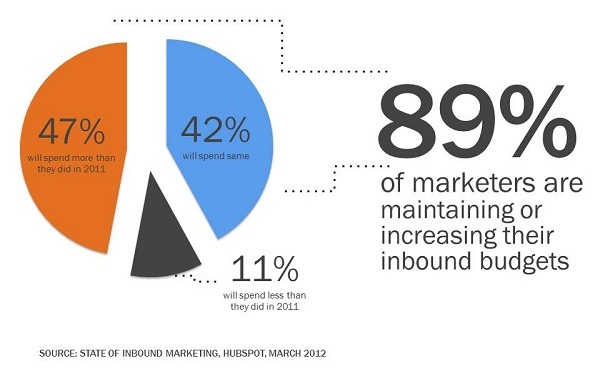
12) Podcasts
You may consider podcasts to be yesterday's news, but we don't really buy it. Podcasts, both video and audio, are great for on-the-go professionals who want to learn while they commute or travel, or for people who just prefer to learn by listening. Successful podcasters build rabid followings through their base of subscribers. Podcasts are typically hosted on iTunes or through another podcasting website, but they can also be linked to directly from your website or blog. Podcasts can also be filled with additional calls-to-action, from social sharing cues to lead-gen offers. Have you checked out HubSpot's weekly video podcast, Marketing Update?
13) SlideShare Presentations
This is easier than it sounds. If you already have interesting internal presentations that don't give away the recipe to your company's secret sauce, you can easily turn them in to SlideShare presentations viewable to the intrigued general public. SlideShare is also a great method of sharing any speaking presentations your executives have delivered at industry-based conferences and events, or for adapting long-form content like ebooks into more visual-friendly content (in which you can also add a CTA to the long-form version to support lead generation!), as we've done with this ebook, whose SlideShare adaptation is pictured below. Create an account for your business on the website, upload your slides, and share them with your networks and on your website. Simple as that! Check out the screenshot below to see what a SlideShare presentation might look like when uploaded and embedded: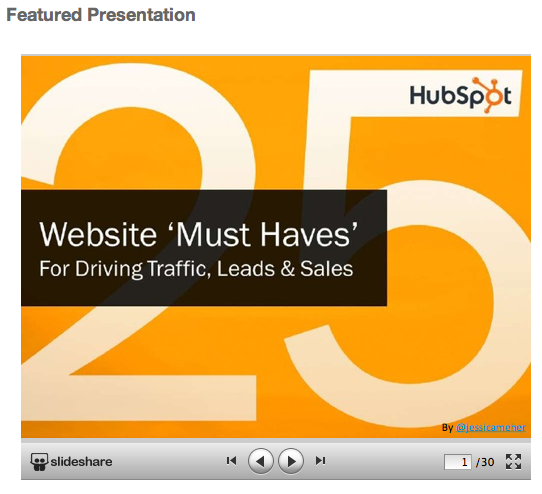
14) User-Generated Content
We touched in this one earlier with our embedded tweets suggestion, but there's so much more to user-created content than just tweets. There are probably some really passionate brand evangelists out there creating awesome content about you -- and you should absolutely be leveraging it. But if you want more than just simple testimonials, you need to provide an incentive that inspires your fans to create. Consider motivating them with a contest that offers a prize for the best piece of content, or if you're using a loyalty program, a points-based reward for submitting content. Then make sure to display all the positive submissions on your site, and share them in social media.
What other types of unique content do you think more businesses should be leveraging?
Image credit: ShedBOy
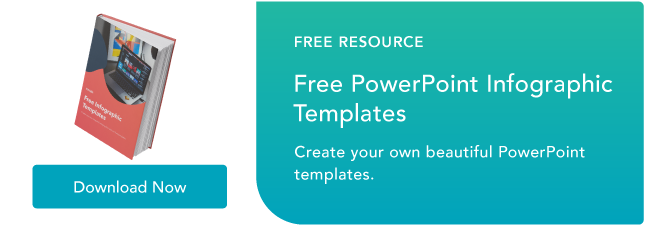
Content Types


![7 Pieces of Content Your Audience Really Wants to See [New Data]](https://53.fs1.hubspotusercontent-na1.net/hubfs/53/contenttypes.webp)
![What Is a White Paper? [FAQs]](https://53.fs1.hubspotusercontent-na1.net/hubfs/53/business%20whitepaper.jpg)

